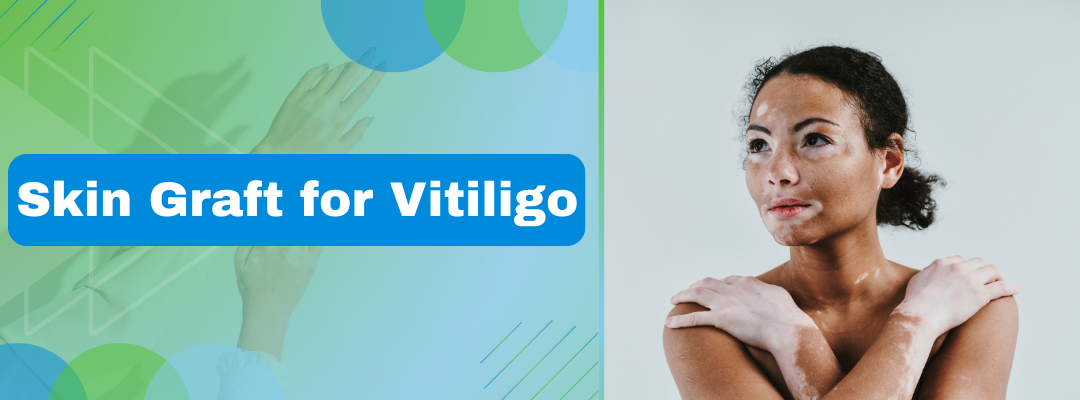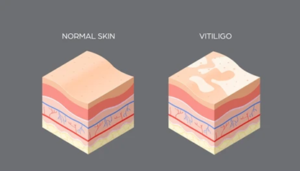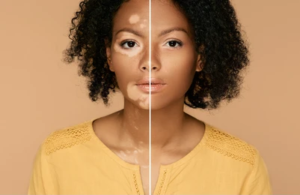Vitiligo is not merely a cosmetic concern; it is a medical condition characterized by the loss of skin pigmentation in patches, leading to visible white spots. These depigmented areas can significantly impact an individual’s psychological and emotional well-being.
Dr. Leena Jain, a seasoned reconstructive microsurgeon and plastic surgeon in Mumbai, confronts this challenging condition with her extensive expertise. She is renowned for her proficiency in hand surgery, limb reconstruction surgery, breast surgery, and many more.
Utilizing advanced surgical techniques and medicinal interventions, Dr. Jain endeavors to restore pigmentation in affected areas, offering hope to those suffering from vitiligo’s effects. However, her approach exceeds basic medical treatment; her work is fueled by deep care and understanding for her patients.
Discover how expert care can restore your skin’s pigmentation and confidence. Contact a specialist today!
Uncover the effectiveness of skin grafting in treating vitiligo’s pigment loss.
Does Skin Grafting Work for Vitiligo?
Skin grafting has shown promising results in treating white spots on skin. It especially shows results for conditions that do not respond to conventional therapies. This skin graft surgery procedure can provide a permanent solution.
Dr. Leena Jain emphasizes, “Success in skin grafting largely depends on careful patient selection and the stability of vitiligo. For those who qualify, it can significantly restore pigment and improve life quality.”
Skin grafting can be particularly effective for stable areas of vitiligo, where small skin pieces from pigmented areas are transplanted to depigmented spots, aiming to restore color.
Discover the different ways skin grafting can bring back your skin’s natural color. Explore now!
Types of Skin Grafting for Vitiligo
There are various skin grafting techniques, personalized to address the specific requirements of each vitiligo case:
- Mini-punch Grafting: This is often used for small, stable areas of vitiligo. Tiny skin grafts are removed from pigmented areas and transferred to depigmented spots.
- Blister Grafting: Less invasive than other methods, this involves creating blisters on pigmented skin using suction. These are then carefully transferred to vitiligo-affected areas.
- Split-thickness Grafts: It is suitable for larger areas. This method involves removing a thinner layer of skin from a donor site and transplanting it to the depigmented area.
Each method has its advantages, chosen according to the size, area, and extent of the white spots on the skin affected by vitiligo. During consultations, patients can expect a detailed explanation of the available options and what to anticipate from each procedure.
Explore the diverse world of skin grafting for vitiligo treatment – find the perfect match for your skin’s needs. Connect with a professional today!
Let’s dive into the world of skin grafting and witness its remarkable procedure of vitiligo
Skin Grafting Procedure for Vitiligo

Initial Consultation and Assessment
A comprehensive medical evaluation is conducted to assess the stability of vitiligo. Different grafting techniques tailored to the patient’s needs are discussed.
Preoperative Preparation
Skin conditioning and general health optimization are undertaken to prepare both the donor and recipient sites, enhancing the success rate of the graft.
The Grafting Procedure
A suitable donor site is chosen, and skin is harvested using methods such as mini-punch, blister, or split-thickness. The skin is then carefully transplanted to the prepared area.
Immediate Postoperative Care
The graft and donor sites are dressed carefully to protect them and manage pain effectively, ensuring patient comfort.
Follow-Up Visits
Regular monitoring of the graft’s health and the healing process is conducted. Adjustments are made as needed to promote optimal outcomes.
Long-Term Care and Maintenance
Guidance is provided on protecting the grafted skin from the sun and maintaining proper skincare to prevent future issues.
Outcome Assessment and Additional Treatments
Once healed, the results are assessed, and further interventions may be considered to refine the appearance if necessary.
This meticulous approach ensures each step of the skin grafting process is performed with precision, aiming for the best results while providing comprehensive care and support during the patient’s healing journey.
Revitalize your skin with the transformative power of skin grafting for vitiligo treatment. Book your appointment today!
Skin graft recovery stages
The healing process of skin graft is critical and involves several stages:
- Initial Healing Phase (Days 1-7):During this stage, the grafted skin begins to adhere to the recipient site, and the formation of new blood vessels (neovascularization) begins. Dressings are regularly changed to monitor progress and prevent infection.
- Early Granulation Phase (Days 7-14):Granulation tissue starts to form beneath the graft as the body initiates the wound-healing process. The grafted area may appear pink or red, and small blood vessels become visible.
- Maturation Phase (Weeks 2-8):The grafted skin continues to heal and mature, gradually blending in with the surrounding tissue. The area may still be sensitive and require protection from trauma or excessive pressure.
- Long-term Healing (Months to Years):Over time, the grafted skin further matures and remodels, becoming more similar in appearance and texture to the surrounding skin. Scarring may occur, but it often improves in appearance over the long term.
Ready to bring color back into your life? Book your appointment for a skin grafting consultation today!
Let’s conclude a journey towards self-assurance and restored pigmentation.
Conclusion
Choosing a skilled and caring surgeon like Dr. Leena Jain for the treatment of white color patches on the skin means putting your trust in one of the most dedicated professionals in vitiligo treatment.
Skin grafts represent a highly effective treatment option for vitiligo, delivering significant improvements in pigmentation and overall appearance. Patients can achieve restored confidence and quality of life through this procedure.
FAQs
Plastic surgery can’t cure vitiligo, but it can significantly improve skin appearance by covering depigmented areas.
How long does vitiligo surgery last?
The duration of vitiligo surgery varies, but the effects can be long-lasting, often depending on the stability of the vitiligo before surgery.



